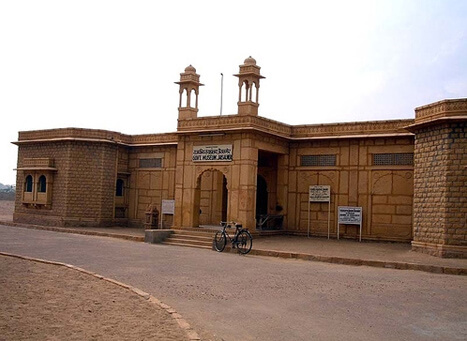WELCOME TO JAISALMER

If you are interested in geology, then Jaisalmer is the place where
you need to go. The Fossil Forest Park or Aakal is located about
15 kilometers from the city. Here you can detect and track
geological tragedies that occurred in the Thar desert 180 million
years ago. The city of Jaisalmer also serves as a guard on the border
of western Rajasthan (and India).This "Golden City" is located near
the border with Pakistan and in the immediate vicinity of the Thar
desert. The most prominent landmark of the city is Jaisalmer Fort,
also called Sonar Kila (Golden Fort). Unlike most other forts in India
,Fort Jaisalmer is not just a tourist attraction. Here are the shops,
hotels and ancient haveli (houses) where generations continue to
live.
Jaisalmer dates back to the 12th century. The story tells us about
Raval Jaisal, the elder heir to Raval Deoraj, who was transferred
to the throne of Lodurva, and his younger half-brother was
crowned. Rawal Jaisal set off in search of a new place to
create his capital when he came across the sage Esul.The sage
told him about the prophecy of Krishna, which stated that the
descendant of his clan Yaduvanshi would find a new kingdom
in the same place. In 1156, Rawal Jaisal built a dirty fort,
named it Jaisalmer in honor of himself, and declared it his
capital.
JAISALMER FORT

Jaisalmer Fort is also called Sonar Kila (Golden Fort), as it rises
from the desert itself and seems to be one with the golden
shades of sand. The setting sun adds its magic and envelops
the fort with mysticism. The fort was built in a classic royal style
by local craftsmen. This fort is a World Heritage Site and
forms an important storyline in one of the famous stories of
Selajit Ray about feluds and the corresponding film “Sonar
Kela” (Golden Fortress).
JAISALMER GOVERNMENT MUSEUM

Founded by the Department of Archeology and Museums, it is
a major attraction for tourists visiting Jaisalmer. The most striking
exhibit is the trophy of the state bird of Rajasthan Godavan (the
great Indian bustard). Presented here are traditional household
items, stone dishes, jewelry and statues from the 7th-9th centuries.
A.E. are the remains of the rich cultural heritage of the city.
NATHMAL JI KI HAVELI

Two brothers of the architect built Natal G. Haveli in the 19th
century. They worked on the harbor from two sides, and the result
was a wonderful mixture of symmetrical design. For
decoration, paintings in miniature style and powerful fangs carved
from yellow sandstone were used.
SALIM SINGH KI HAVELI

This haveli was built in the first half of the 18th century, and part
of it is still occupied by the descendants of the indigenous
inhabitants. The high arched roof is supported by carved
peacock brackets. Legend has it that there were two additional
wooden floors that corresponded in height to Maharaja's palace,
but he ordered the upper level to be demolished.
PATWON KI HAVELI

This five-story house is one of the largest and most carefully
carved haveli in Jaisalmer, proudly located on a narrow street.
Although the Havelis have lost some of their early fame,
several paintings and mirrors can still be seen on the inner walls.
Mandir Palace

The five-story greatness of Badal Mahal (Cloud Palace) is
further enhanced by its pagoda-like tower Tatsiya. Each floor
of the palace has a fantastically carved balcony. Badal Palace
owes its beauty to the skills of Muslim masters who sculpted a
tower in the shape of Tazia (a float that is part of the
Muharram procession).








0 comments:
Post a Comment